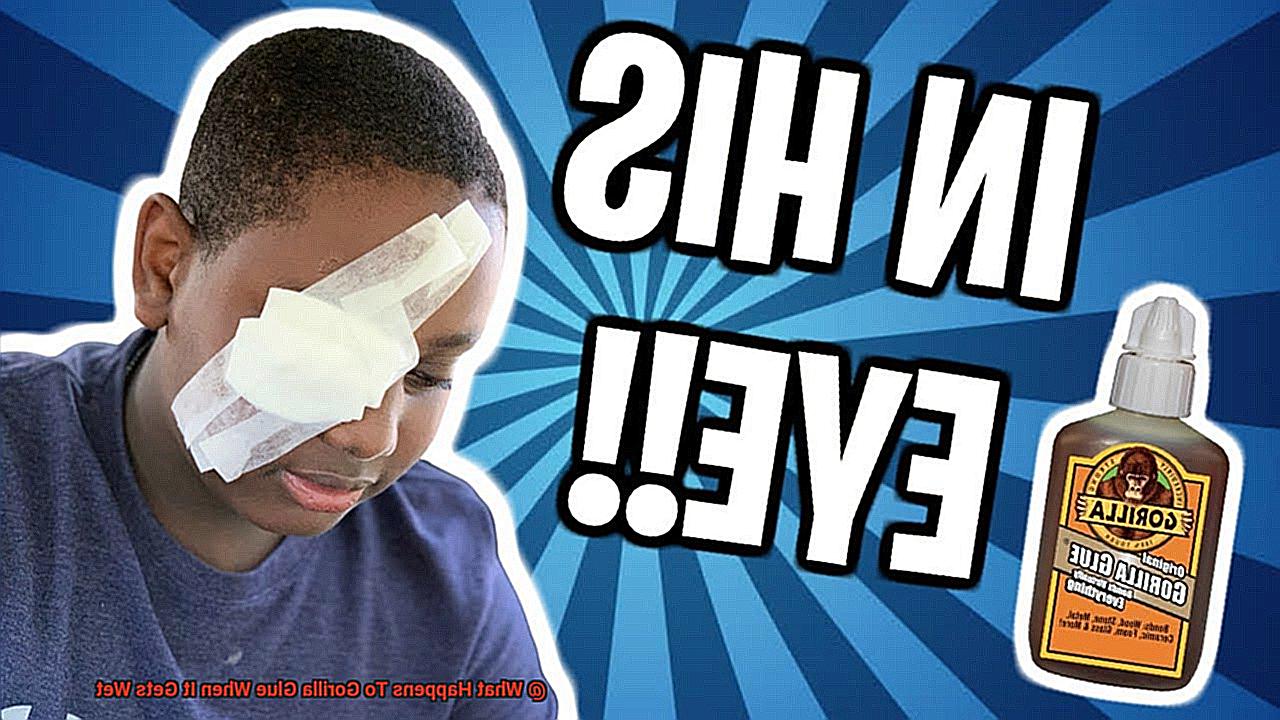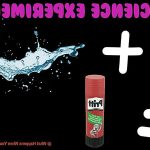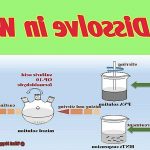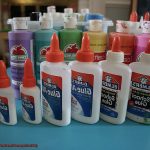Imagine this: you’ve spent hours working on a DIY project, using Gorilla Glue to secure every piece in place. You’re confident that your creation is sturdy and long-lasting. Suddenly, raindrops start falling outside, and you can’t help but wonder – what happens to Gorilla Glue when it gets wet?
Don’t worry; we’ve got your back. In this blog post, we’ll explore the science behind Gorilla Glue’s reaction to water and moisture. We’ll delve into the process of curing and expanding, as well as the effects of heat and cold on this famous adhesive.
Gorilla Glue is known for its waterproof and weather-resistant qualities, but what happens when it’s put to the test? Does it hold up or give way under pressure? We’ll answer all these questions and more.
Whether you’re a seasoned DIY enthusiast or just getting started, understanding how Gorilla Glue behaves under various conditions is vital for project success. So sit tight, relax, and get ready to dive into the world of Gorilla Glue and water.
In this post, we’ll uncover tips on how to prevent any damage from occurring when using Gorilla Glue in moist environments. From explaining why water doesn’t affect cured glue to discussing how humidity affects uncured glue’s drying time, we’ve got you covered.
So if you want to learn everything there is to know about what happens to Gorilla Glue when it gets wet – keep reading.
What is Gorilla Glue?
Contents
If you’re looking for an adhesive that can handle any DIY project, look no further than Gorilla Glue. This polyurethane-based adhesive has been a game-changer since it first hit the market in 1999, and is now a go-to choice for both professionals and amateurs alike.
What sets Gorilla Glue apart from other adhesives is its unique ability to expand and foam up when it comes into contact with moisture. This means that it can fill gaps and create a tight bond between surfaces, making it perfect for tough jobs where a strong, long-lasting hold is crucial.
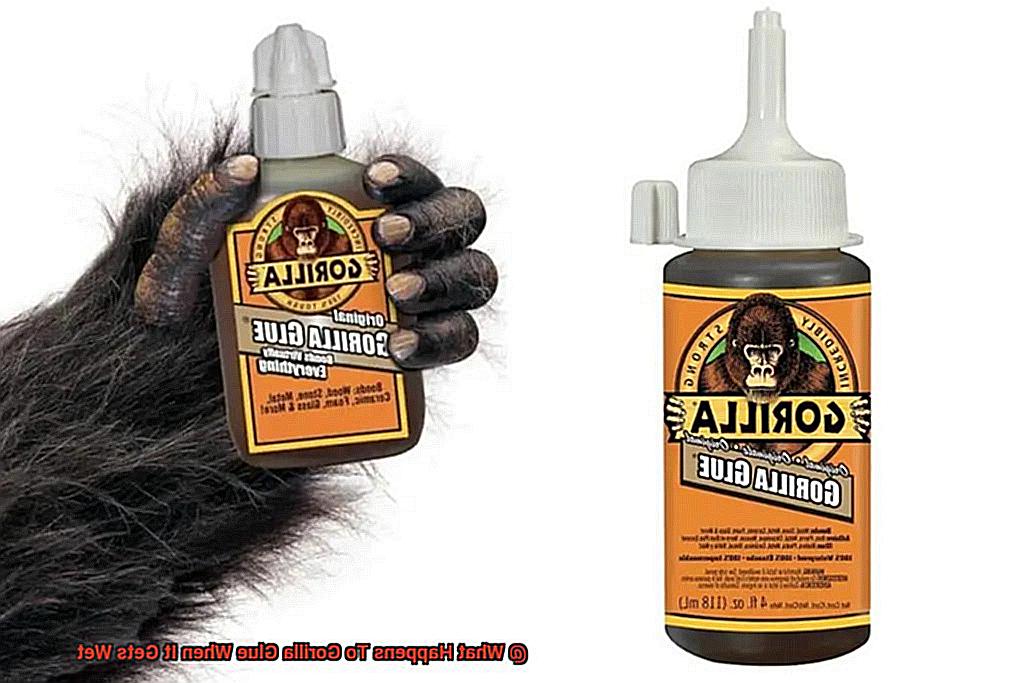
Gorilla Glue is also incredibly versatile. It can be used on a wide range of surfaces including wood, metal, ceramic, foam, glass, and more. Plus, it’s waterproof when fully cured, making it an ideal choice for outdoor projects or items that will be exposed to moisture.
But with great power comes great responsibility. Gorilla Glue should not be used on surfaces that will be submerged in water for extended periods of time, as it can break down and lose its hold. Additionally, the expanding nature of the glue can cause it to foam up and create a mess if not used properly. To avoid any issues with curing or messes, it’s important to use caution when applying Gorilla Glue and follow the instructions carefully.
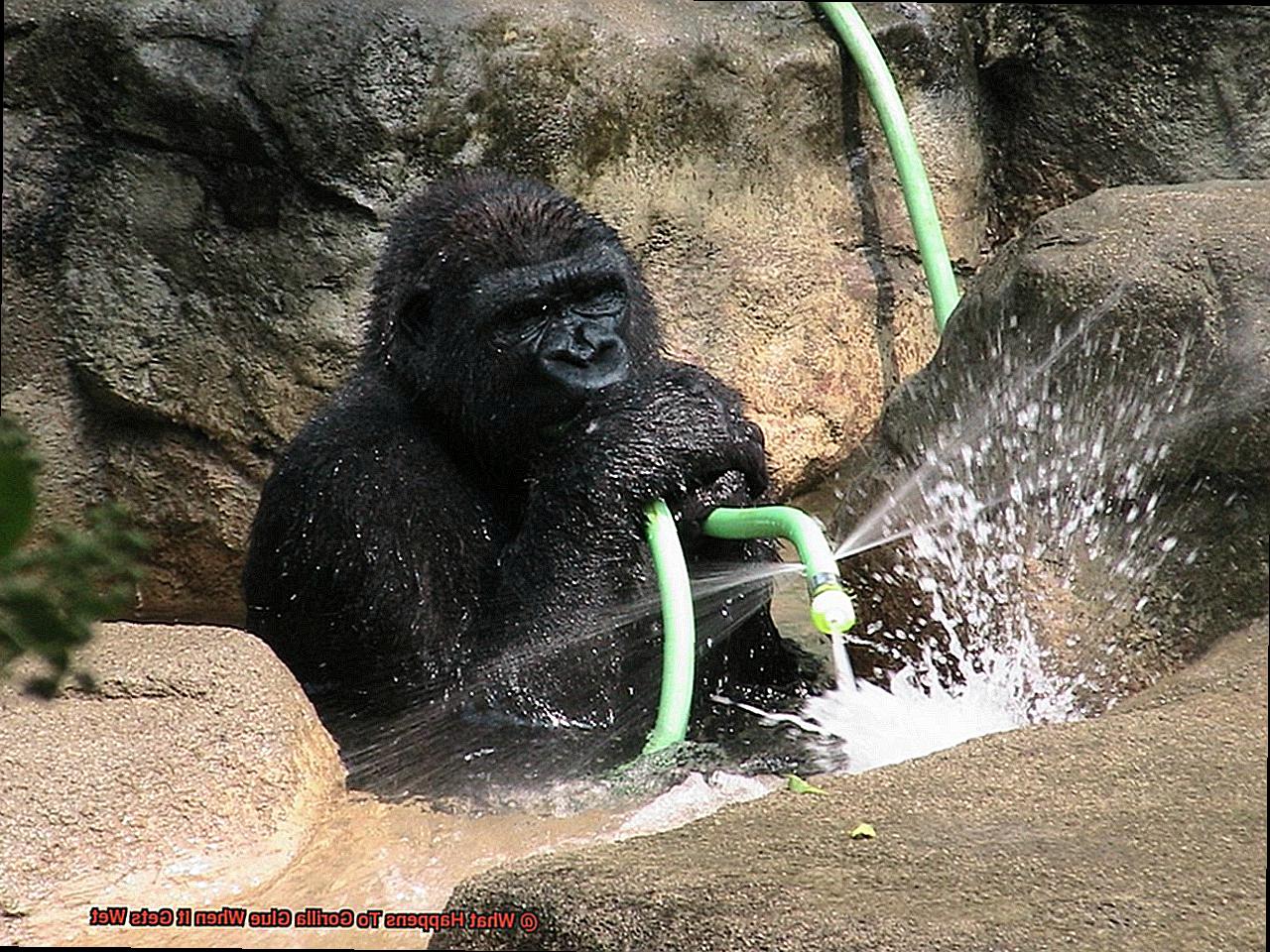
To ensure that your Gorilla Glue stays in top condition, store it in a dry environment and work in a well-ventilated area. When applying the glue, use only a small amount of water and keep the surrounding environment as dry as possible.
How Does Gorilla Glue React When Wet?
Gorilla Glue is the go-to adhesive for people who want a durable and long-lasting bond. But what happens when this polyurethane adhesive comes into contact with water? Let’s dive into the fascinating world of Gorilla Glue and explore how it reacts when wet.
The good news is that once Gorilla Glue has fully cured, it becomes waterproof. This means you can use it in damp environments without losing its bonding power. Unlike other types of glue, Gorilla Glue doesn’t dissolve or break down when exposed to water.
However, to ensure proper curing, it’s essential to understand that Gorilla Glue needs moisture. Applying the glue to a dry surface may result in slower or less effective curing. That’s why it’s recommended to dampen the surfaces before applying the glue.
If Gorilla Glue comes into contact with water before it has fully cured, it may foam up and expand. This could be problematic if you’re working in a tight space or using too much glue. To avoid this issue, always use a small amount of glue and wipe away any excess before it has a chance to foam up.
Advantages of Gorilla Glue Expanding When Wet
Gorilla Glue expands when it comes into contact with water, and while some may view this as a disadvantage, there are actually several advantages to this property.
One of the most significant advantages of Gorilla Glue’s expanding when wet is that it can fill gaps and cracks in surfaces that are being glued together. Even if the surface is uneven or has imperfections, the glue can still provide a strong and reliable bond. For example, if you’re repairing a broken chair leg and there is a small gap between the pieces, Gorilla Glue will expand and fill in that gap, creating an even stronger bond than other adhesives.
The expansion also helps to create an even distribution of pressure across the surface being glued. This ensures that there are no weak spots in the bond, making the bond created by Gorilla Glue often stronger than other types of adhesive.
Humid or damp environments can be challenging for other adhesives to maintain their bonding strength. However, Gorilla Glue’s ability to expand when wet makes it ideal for use in such conditions. Its expansion ensures that it remains strong even in moist environments.
Lastly, Gorilla Glue’s ability to expand when wet makes it ideal for filling gaps or repairing damaged surfaces. Whether you have a crack in a piece of furniture or a hole in a wall, applying Gorilla Glue can help to fill in those imperfections and create a robust bond that lasts.
Disadvantages of Gorilla Glue Expanding When Wet
Gorilla Glue is a phenomenal adhesive that has gained a reputation for its ability to bond nearly any surface with unmatched strength. However, there is one significant disadvantage to this popular adhesive – it expands when wet. This expansion can cause several issues that may lead to separation, difficulty in clean-up, and even discoloration or staining of the bonded surface.
One of the most common problems with Gorilla Glue expanding when wet is that it can cause the bonded surfaces to separate. The introduction of moisture causes the glue to foam up and expand, creating gaps between the surfaces being bonded. These gaps can weaken the bond, potentially causing it to separate over time.
Cleaning up Gorilla Glue once it has expanded can be challenging. Accidentally applying the glue in the wrong place or needing to remove it for some reason may require sanding or scraping to remove all traces of the adhesive fully.
In addition to separation and difficult clean-up, Gorilla Glue expanding when wet can also cause discoloration or staining of the bonded surface. The foaming action of the glue causes it to seep into the material being bonded, leaving behind unsightly marks or discoloration that may be difficult to remove.
Despite these disadvantages, Gorilla Glue remains a formidable adhesive that is perfect for use in humid or damp environments where other adhesives would fail. However, it is essential to take precautions to prevent contact with moisture when using this type of glue. This will ensure that it is applied correctly and does not cause any problems with separation, difficult clean-up, or discoloration.
Tips for Using Gorilla Glue in Damp or Humid Environments
Gorilla Glue is known for its exceptional strength and ability to bond almost any material. However, using it in damp or humid environments can be a challenge. As an expert on Gorilla Glue, I have compiled some tips to help you achieve the best results.
Prepare the Surface
Before applying Gorilla Glue, make sure that the surfaces you want to bond are clean, dry, and free of any contaminants. Moisture or dirt can interfere with the bonding process and weaken the glue’s strength. A dry surface is key to a strong bond.
Apply Pressure
Once you have applied the glue, it’s crucial to apply pressure to the surfaces being bonded. This can be achieved by using a clamp or other type of pressure. The pressure will help ensure that the glue adheres properly and creates a strong bond.
Use Less Glue
When working in damp or humid conditions, use less Gorilla Glue than you usually would. Excessive foaming and expansion can compromise the bond, so it’s better to go slow and steady than risk overdoing it.
Apply Thin Layers
It’s wise to apply the glue in a thin, even layer rather than using too much at once. This can help prevent any excess glue from dripping or running, which can be particularly problematic in damp or humid conditions.
Allow for Extra Drying Time
When working in damp or humid environments, Gorilla Glue may take longer to dry than usual. Be patient and allow for extra drying time to ensure that the bond is strong enough.
Also Read: Is Gorilla Super Glue Waterproof?
Conclusion
To sum it up, Gorilla Glue is the go-to adhesive for any DIY enthusiast. Its unique property of expanding and foaming up when exposed to moisture makes it a reliable choice for heavy-duty jobs that require a strong and durable hold. Once cured, this glue becomes waterproof and weather-resistant, making it perfect for outdoor projects or items that will be subjected to moisture.
Although the expanding quality of Gorilla Glue may seem like a drawback, it has its advantages. It can fill gaps and cracks in surfaces being bonded, distribute pressure evenly across the surface, and maintain its bonding strength even in humid or damp conditions.
However, using Gorilla Glue in moist environments calls for caution. You must prepare the surface correctly, apply pressure to the surfaces being bonded, use less glue than usual, apply thin layers of glue, and allow extra drying time.
Knowing how Gorilla Glue behaves under different conditions is crucial for project success. By following these tips and taking precautions when applying Gorilla Glue in damp environments, you can rest assured that your creation will be robust and long-lasting.

